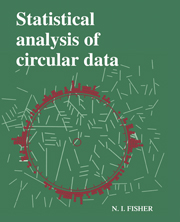Book contents
- Frontmatter
- Contents
- Preface to the first paperback edition
- Preface
- 1 Introduction
- 2 Descriptive methods
- 3 Models
- 4 Analysis of a single sample of data
- 5 Analysis of two or more samples, and of other experimental layouts
- 6 Correlation and regression
- 7 Analysis of data with temporal or spatial structure
- 8 Some modern statistical techniques for testing and estimation
- Appendix A Tables
- Appendix B Data sets
- References
- Index
2 - Descriptive methods
Published online by Cambridge University Press: 03 May 2011
- Frontmatter
- Contents
- Preface to the first paperback edition
- Preface
- 1 Introduction
- 2 Descriptive methods
- 3 Models
- 4 Analysis of a single sample of data
- 5 Analysis of two or more samples, and of other experimental layouts
- 6 Correlation and regression
- 7 Analysis of data with temporal or spatial structure
- 8 Some modern statistical techniques for testing and estimation
- Appendix A Tables
- Appendix B Data sets
- References
- Index
Summary
Introduction
In the Preface, the various types of circular data – vectors/axes, uniform/unimodal/multimodal – were described together with the usual ways of recording them. This chapter is concerned with the most basic aspects of statistical analysis of a single sample of circular measurements θ1,…,θn: methods for displaying the sample, and simple summary quantities which can be calculated from the sample.
Data display
Why do we display data? There is no shortage of reasons, but among the most important are:
to gain an initial idea of the important characteristics of the sample; for example, does the sample appear to be from a uniform (or isotropic) distribution; or from a unimodal distribution; or from a multimodal distribution?
to emphasise such characteristics
to suggest models for the data, such as a von Mises model for a sample which appears to be drawn from a symmetric unimodal distribution
to try to avoid doing something stupid: note the advice once given to students graduating from a weather-forecasting course – before issuing a forecast, look out of the window.
In view of the first of these points, the nature of any display, apart from a simple plot of the raw data, will depend on the number of modal groups apparent in the sample. Unless the sample is clearly unimodal, constructing a useful display is not a trivial exercise.
- Type
- Chapter
- Information
- Statistical Analysis of Circular Data , pp. 15 - 38Publisher: Cambridge University PressPrint publication year: 1993
- 1
- Cited by



